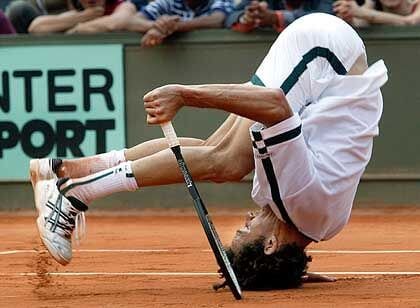Hey there, sports enthusiasts! It’s Daniel, your friendly physiotherapist from Manitoba, and today, we’re diving into a topic that hits close to home for many of us: sport-related injuries. Whether you’re a seasoned athlete or just enjoy a friendly game of weekend baseball, injuries can happen to the best of us. But fear not! I’m here to shed some light on the three most common sport-related injuries and, more importantly, how to treat them effectively.
Injury #1: Sprained Ankles
Let’s start with a classic – the sprained ankle. This injury occurs when the ligaments that support your ankle get stretched or torn, often due to sudden twisting or rolling motions. It’s a frequent occurrence in sports like basketball, soccer, and even casual jogging.
Treatment:
R.I.C.E. Method: Rest, Ice, Compression, and Elevation are your best friends. Rest your injured ankle, apply ice (wrapped in a cloth) for 15-20 minutes every couple of hours, use a compression bandage to reduce swelling, and elevate your leg to minimize inflammation.
Anti-Inflammatory Medication: Over-the-counter pain relievers like ibuprofen can help with pain and swelling.
Physiotherapy: A physiotherapist can guide you through exercises that strengthen the ankle and improve range of motion. Here’s a simple exercise:
Exercise 1: Ankle Alphabet
- Sit on a chair with your injured leg extended.
- With your foot, draw the letters of the alphabet in the air, moving your ankle in a controlled manner.
- Do this exercise for each letter of the alphabet.
- Perform 2-3 sets daily.
Alternative Exercise: Towel Scrunch
- Sit on a chair with your foot on a towel placed on the floor.
- Scrunch the towel with your toes, pulling it towards you.
- Release and repeat for 2-3 sets daily.
Injury #2: Hamstring Strains
Hamstring strains are common sports injuries that involve the stretching or tearing of the hamstring muscles, which run along the back of your thigh. These injuries often occur in sports that require explosive movements like sprinting, jumping, and kicking, such as football, soccer, and track and field.
Treatment:
Rest and Ice: Similar to other soft tissue injuries, it’s essential to rest the affected leg and apply ice to reduce swelling during the initial phase of the injury.
Pain Relief: Over-the-counter pain medications can help manage pain and inflammation as recommended by your healthcare provider.
Physiotherapy: A physiotherapist plays a crucial role in the rehabilitation of hamstring strains. However, the timing of when to start exercises depends on the severity of the strain. Here’s a guideline:
Grade 1 Strain (Mild): For mild strains, you may begin gentle stretching exercises within the first few days after the injury, as long as they are pain-free.
Grade 2 Strain (Moderate): With moderate strains, it’s usually best to wait until the initial pain and swelling have subsided before starting any exercises, which may be a few days to a week after the injury.
Grade 3 Strain (Severe): For severe strains, it may take several weeks of rest before you can begin any exercises. The healing process for a Grade 3 strain is more extensive, and early exercise may exacerbate the injury.
Exercise Example 1: Hamstring Stretch (Grade 1 and 2 Strains)
- Lie on your back with both legs extended.
- Bend one knee and gently pull it towards your chest, keeping the other leg straight.
- Hold for 20-30 seconds, feeling a stretch in the back of your thigh.
- Switch legs and repeat.
- Perform 2-3 sets for each leg daily.
Alternative Exercise 1: Isometric Hamstring Contraction (Grade 1 and 2 Strains)
- Sit on a chair with your legs extended.
- Press the back of your knee down into the chair, contracting your hamstring muscle.
- Hold for 5-10 seconds and release.
- Do 2-3 sets daily.
Exercise Example 2: Leg Raise (Grade 3 Strains, After Healing)
- Lie on your stomach with your legs extended.
- Lift your injured leg a few inches off the ground while keeping your knee straight.
- Hold for 5-10 seconds and lower it back down.
- Do 2-3 sets of 10-15 repetitions daily, but only after your healthcare provider or physiotherapist approves.
Alternative Exercise 2: Ball Hamstring Curl (Grade 3 Strains, After Healing)
- Lie on your back with your feet on a stability ball.
- Push your hips up, bending your knees and rolling the ball toward you with your feet.
- Hold for a moment and then roll the ball back out.
- Perform 2-3 sets of 10-15 repetitions daily, under professional guidance.
Remember that the timing of when to start exercises for hamstring strains should be discussed with your healthcare provider or physiotherapist, as they will provide specific recommendations based on the severity of your injury and your individual circumstances. Starting exercises too early can impede healing, so always follow their advice closely.
Injury #3: Stress Fractures
Stress fractures are tiny cracks in a bone caused by repetitive stress or overuse. They often affect weight-bearing bones like the shins, making them common in sports like distance running and basketball.
Treatment:
Rest: The primary treatment for stress fractures is rest. You’ll need to give your body time to heal.
Protection: In some cases, a brace or crutches may be necessary to prevent further stress on the injured bone.
Gradual Return: Once the fracture is healed, a gradual return to activity is crucial. Start slowly and gradually increase intensity under the guidance of a healthcare professional.
Exercise Timing: The timing for exercise after a stress fracture is usually delayed compared to sprains and strains. You should avoid any weight-bearing or high-impact exercises until the fracture has healed, which can take several weeks to a few months. Once the fracture is healed, exercises like Wall Push-Ups can be gradually introduced under the guidance of a healthcare professional.
The Common Thread: Physiotherapy
You may have noticed a recurring theme in the treatment of these common sport-related injuries: physiotherapy. It’s not just about healing; it’s about preventing future injuries and optimizing performance.
A skilled physiotherapist can assess your condition, develop a tailored rehabilitation plan, and guide you through exercises that will strengthen weakened areas and improve flexibility. They’re your partners in getting back in the game and staying there.
Final Thoughts
Sport-related injuries are a part of an active lifestyle, but they don’t have to keep you on the sidelines indefinitely. With the right treatment, proper rehabilitation, and a dash of patience, you can bounce back stronger than ever.
Remember, though, it’s always best to consult a healthcare professional for a proper diagnosis and treatment plan. Whether it’s a sprained ankle, a strained muscle, or a stress fracture, your journey to recovery starts with the right guidance.
Stay active, stay safe, and keep pushing your limits out there on the field, court, or track!
References
American Orthopaedic Foot & Ankle Society. (2018). Ankle Sprain Exercises. https://www.aofas.org/footcaremd/how-to/foot-injury/Pages/How-to-Do-Exercises-for-Ankle-Sprain.aspx
OrthoInfo. (2020). Stress Fractures. https://orthoinfo.aaos.org/en/diseases–conditions/stress-fractures/
Mayo Clinic. (2021). Sprained ankle. https://www.mayoclinic.org/diseases-conditions/sprained-ankle/diagnosis-treatment/drc-20353231
American Academy of Orthopaedic Surgeons. (2021). Sprains, strains and other soft-tissue injuries. https://orthoinfo.aaos.org/en/diseases–conditions/sprains-strains-and-other-soft-tissue-injuries/
MedlinePlus. (2021). Stress fractures. https://medlineplus.gov/ency/patientinstructions/000654.htm




